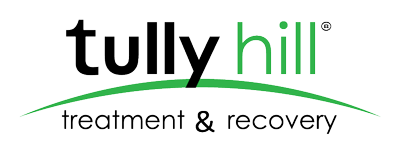You’re not alone when it comes to alcohol or drug addiction. In fact, data collected over time demonstrates that up to two out of every three American families have been adversely affected by alcohol and other drug addiction. Addiction is much more common than people want to believe.
Addictions usually lead to another person(s) becoming a caretaker of sorts. Enabling the addiction is not only harmful to the addict but can also lead to significant problems for the caretaker. Caretakers can be anyone who lives with the addict, or someone who is in constant contact with them. This could include a spouse, a parent, a child, a friend, a coworker, and more.
Enablers genuinely think they are helping their loved one. The problem is that when an addict is enabled time and time again, they actually think their actions are acceptable. Their sense of denial grows with their addiction.
When someone becomes addicted to drugs and/or alcohol, he or she acts in such a way that disrupts normal life activities. He or she causes damage that cannot be easily repaired, both physically and emotionally. Usually, these damages come at the expense of others. Below are signs of someone who may have an addiction and the impact they have on the enabling caretaker.
Household Relationships
Dependency. That’s how an addict feels. Most of their life is concerned with their drug of choice. Their drug addiction impacts the brain and tells them that’s a normal way of life. It’s almost as if they are oblivious to the pain they are causing others around them.
Chaos. That’s the norm for those living in the same household as addicts. Emotional distress runs rampant in homes that deal with drug addiction. Family members often feel hurt, afraid, anxious, resentful, and a plethora of other feelings. In short, they don’t know how to appropriately help their loved one dealing with addiction. These unsure feelings, unfortunately, can lead to enabling addicts because they simply don’t know what else to do.
Financial Burden
Addicts tend to not think about their long-term financial situation. Instead, they are focused more on their next high – no matter the cost. Addicts have no problem spending their last dollars on drugs or alcohol, even if that means ignoring basic living costs such as food, rent, hygiene products and more. It’s not uncommon for addicts to steal from their loved ones in order to fuel their drug addiction.
Many enablers supply a cash flow for addicts simply because they love them and would rather not see them upset. Enablers view addicts as a basic living cost, much like mortgage payments, food, water, clothes and more. This sadly takes well-earned money from loved ones to spend any way they’d please. Some enablers drown their savings, demolish their credit, and even claim bankruptcy due to supplying their addicts with money.
Emotional Behaviors
Work, friends, family… none of that matters when drug addiction takes over an addict’s life. You’ll often see addicts completely disassociate themselves, especially to those who may try to help treat the addiction or stop it. Stability through any facet of life is difficult for addicts to obtain. As a result, emotional behaviors such as mood swings, anger issues, depression and more begin to take over their lives. As mental health deteriorates, the chances of domestic violence and child abuse and neglect increase.
Caregivers and enablers often feel emotionally drained, even when not dealing directly with the addict. They understand that, at any moment, an addict may “snap.” A constant feeling of fear is not a healthy lifestyle. As a result, enablers can forget to care for themselves; caring for addicts can result in the enablers’ lives to spiral out of control.
Remember, close to two out of three American households deal with addiction. In short, nearly everyone either struggles, or know someone who struggles with drug addiction. That could be a lifetime friend, a spouse, a neighbor, a coworker, or any other person you come in frequent contact with. The signs above can help identify when addiction has gotten to the point of no return – the point where professional treatment is necessary to help ALL involved.
Please note that, whereas most if not all of our older blog posts do not have appropriate, non-stigmatizing language – i.e., substance use disorder in place of addiction and/or chemical dependency – all subsequent posts do and will retain language that avoids propagating negative stereotypes and biases through the use of slang and idioms.
Likewise, we have pledged to follow the guidelines set forth by the Office of National Drug Control Policy and that are conceptually and in general endorsed by the American Society of Addiction Medicine (ASA), the federal Substance Abuse and Mental Health Services Administration (SAMHSA), and other federal and state entities governing and regulating substance use disorder. We will therefore now use person-first language that respects the worth and dignity of all people; that focuses on the medical as well as clinical nature of substance use disorders and treatment; and that promotes the recovery process.









